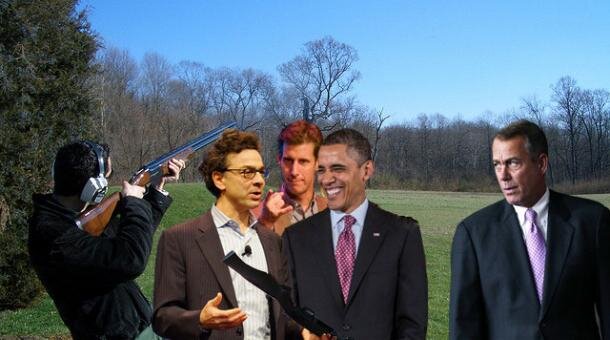Sure, I Remember That (Ep. 113)
[omny:https://traffic.omny.fm/d/clips/aaea4e69-af51-495e-afc9-a9760146922b/14a43378-edb2-49be-8511-ab0d000a7030/3321f252-bc4f-4fc8-8b7e-ab0d001a60e9/audio.mp3]

Do you remember this skeet-shooting outing with Stephen Dubner, Kai Ryssdal, Barack Obama, and John Boehner?
Our latest Freakonomics Radio on Marketplace podcast is called “Sure, I Remember That.” (You can download/subscribe at iTunes, get the RSS feed, listen via the media player above, or read the transcript here.) It’s about false memory, particularly in the political realm, and how we are more capable of “remembering” an event that never happened if the event happens to synch up with our political ideology.
The piece is based on a fascinating new paper, “False Memories of Fabricated Political Events,” by Steven J. Frenda, Eric D. Knowles, William Saletan, and Elizabeth Loftus. It grew out of a great experiment conducted by Slate, in which people saw four photographs of political events, three of them real pictures and one that had been doctored. In the podcast, you’ll hear from Loftus, a professor at UC Irvine, who is a leading scholar in memory in general and false memory in particular.
Here, to give you a sense of how the experiment worked, is what one of the fake pictures looked like:

Participants in the experiment were shown a doctored photo, right (the original is at left), with a caption reading “April 20, 2009: President Obama, greeting heads of state at a United Nations conference, shakes the hand of Iranian President Mahmoud Ahmadinejad. White House aides say the encounter was unplanned and the handshake was a formality.” In reality, however, the event never happened and there is no recorded meeting of Obama and Ahmadinejad.

Comments